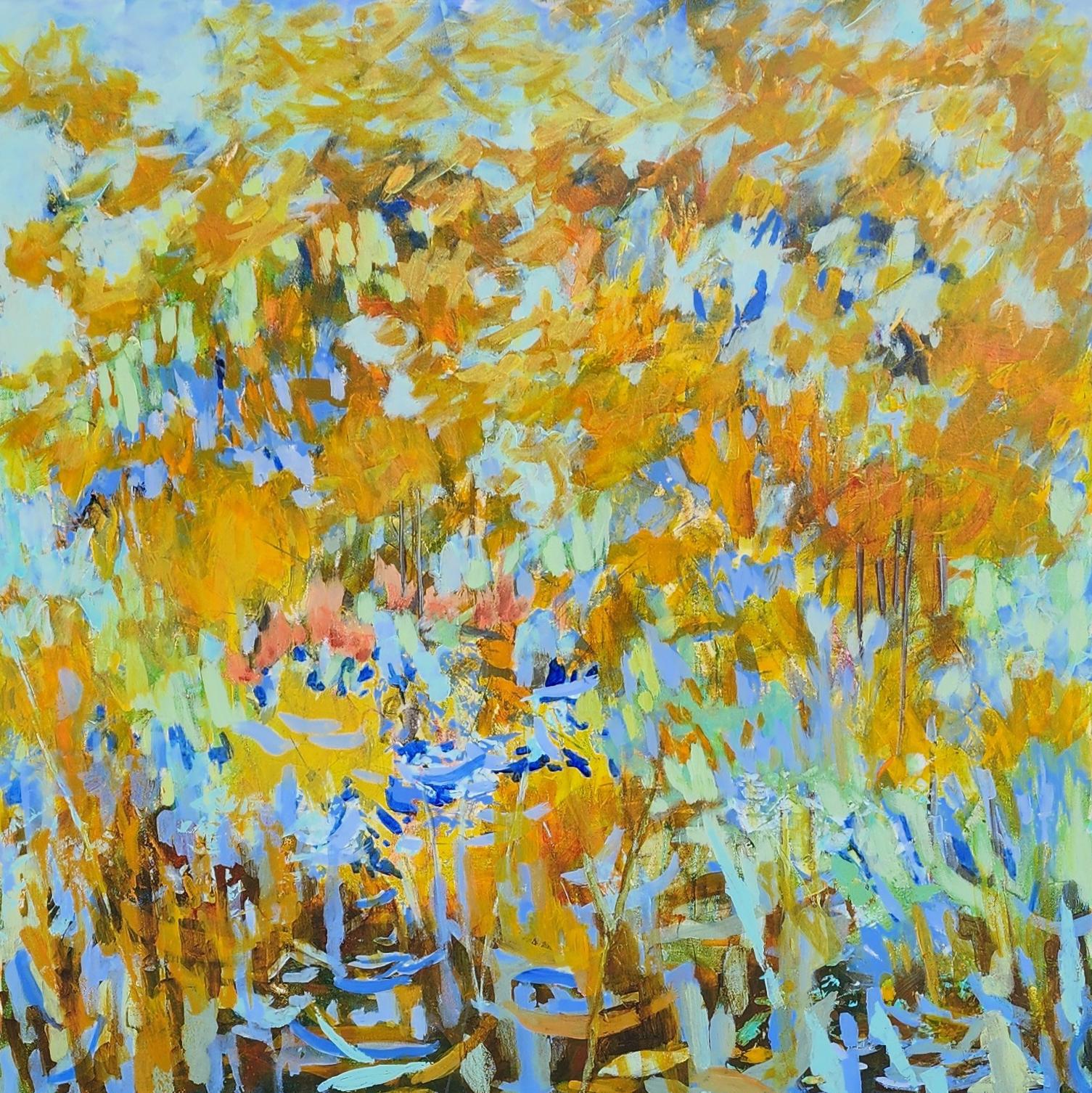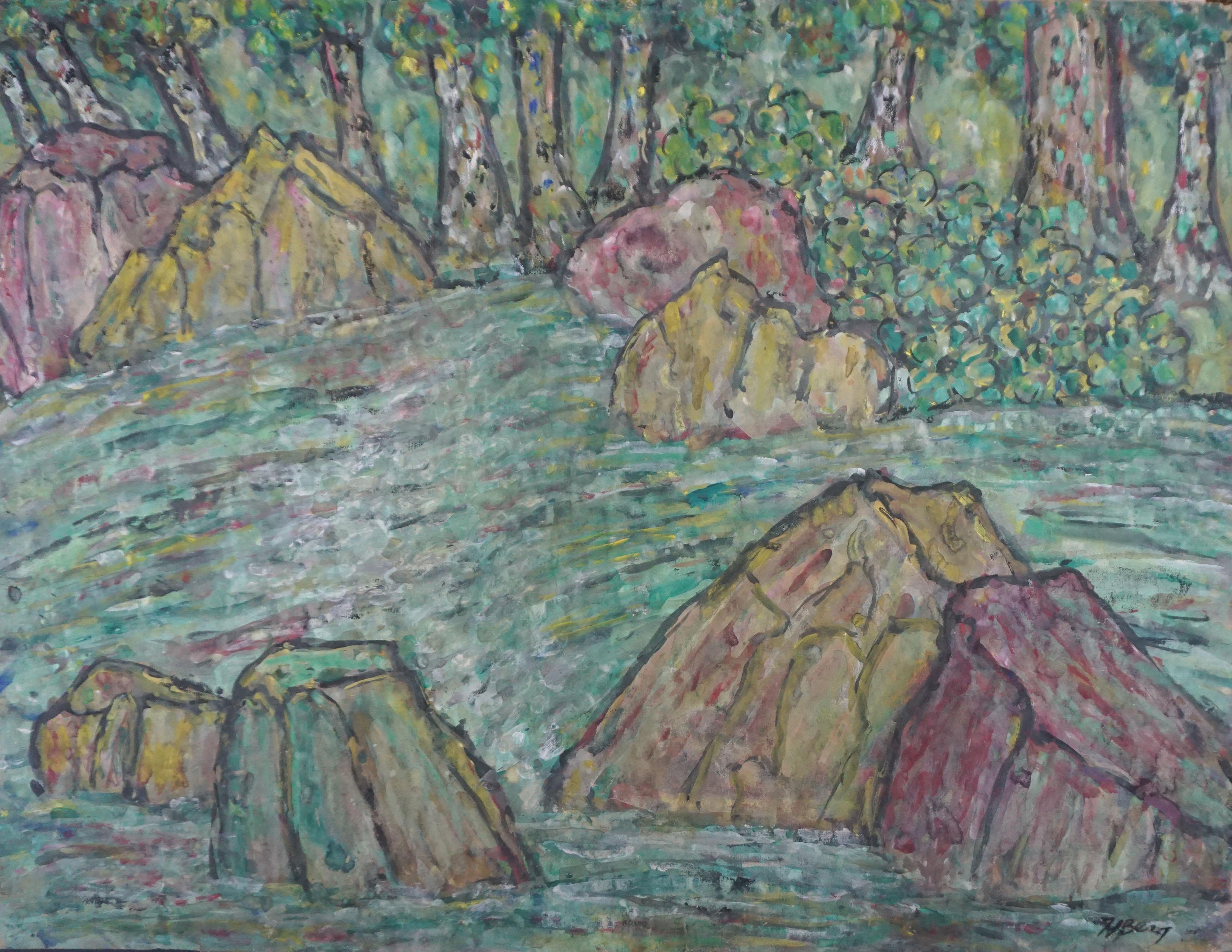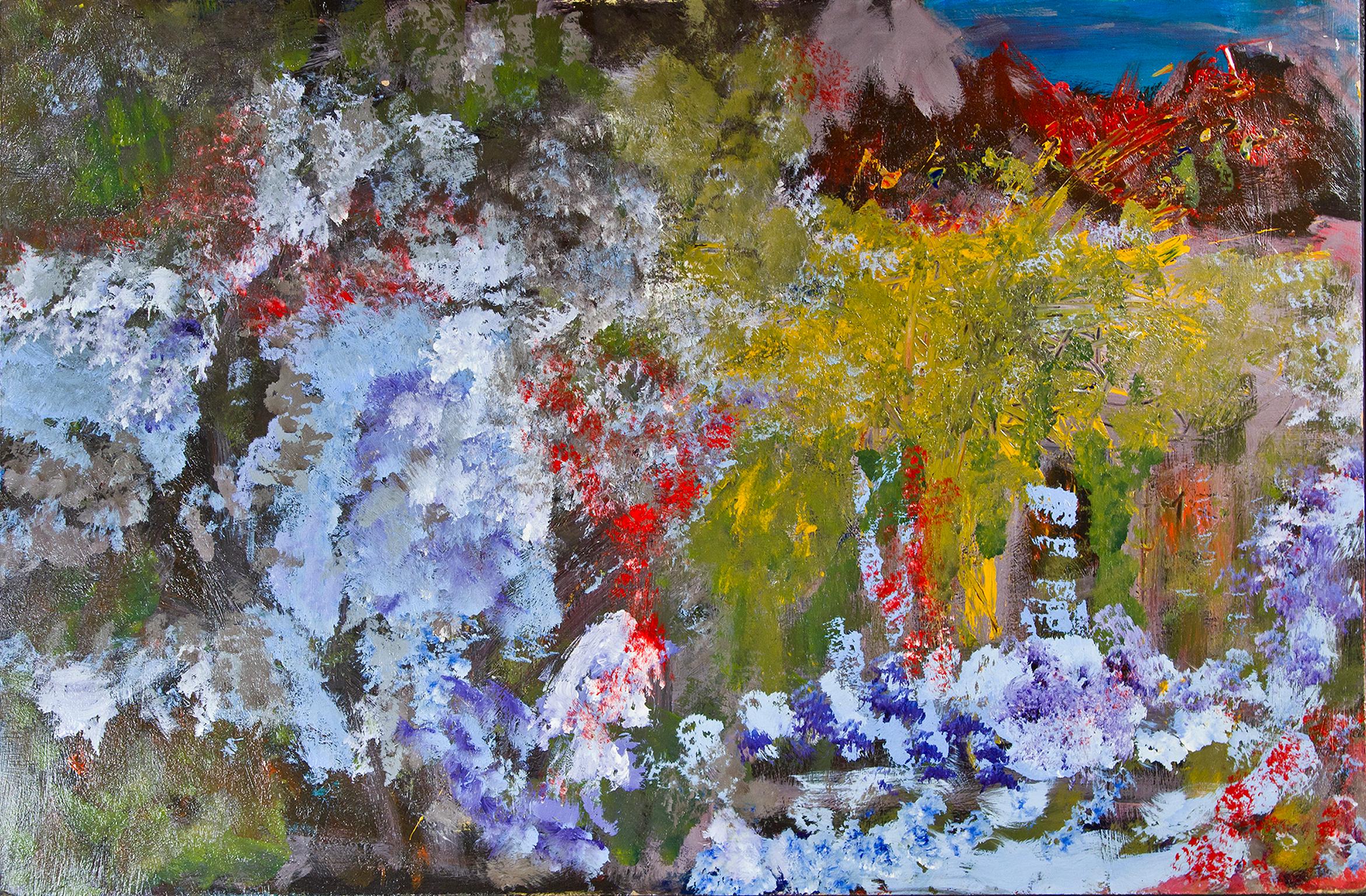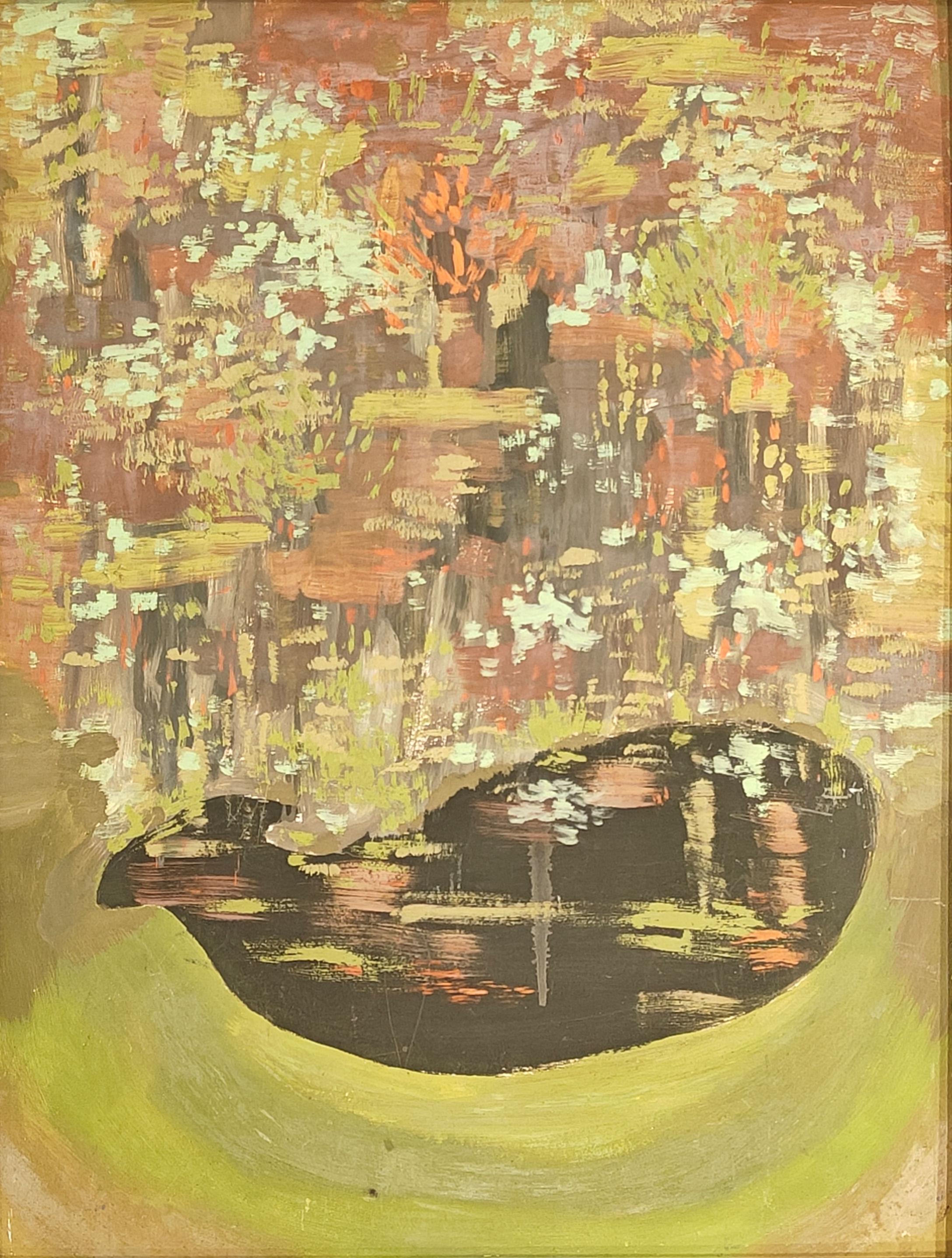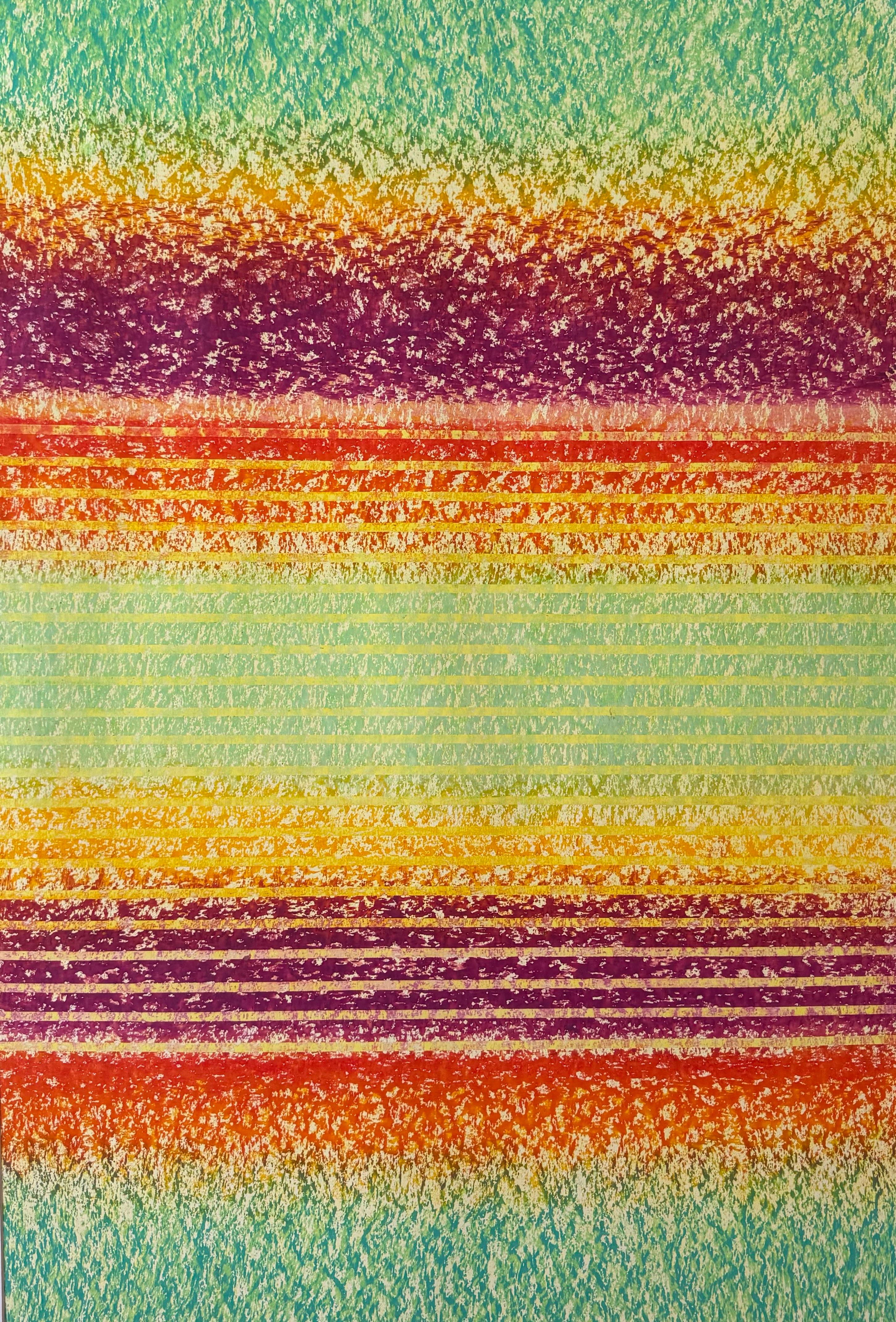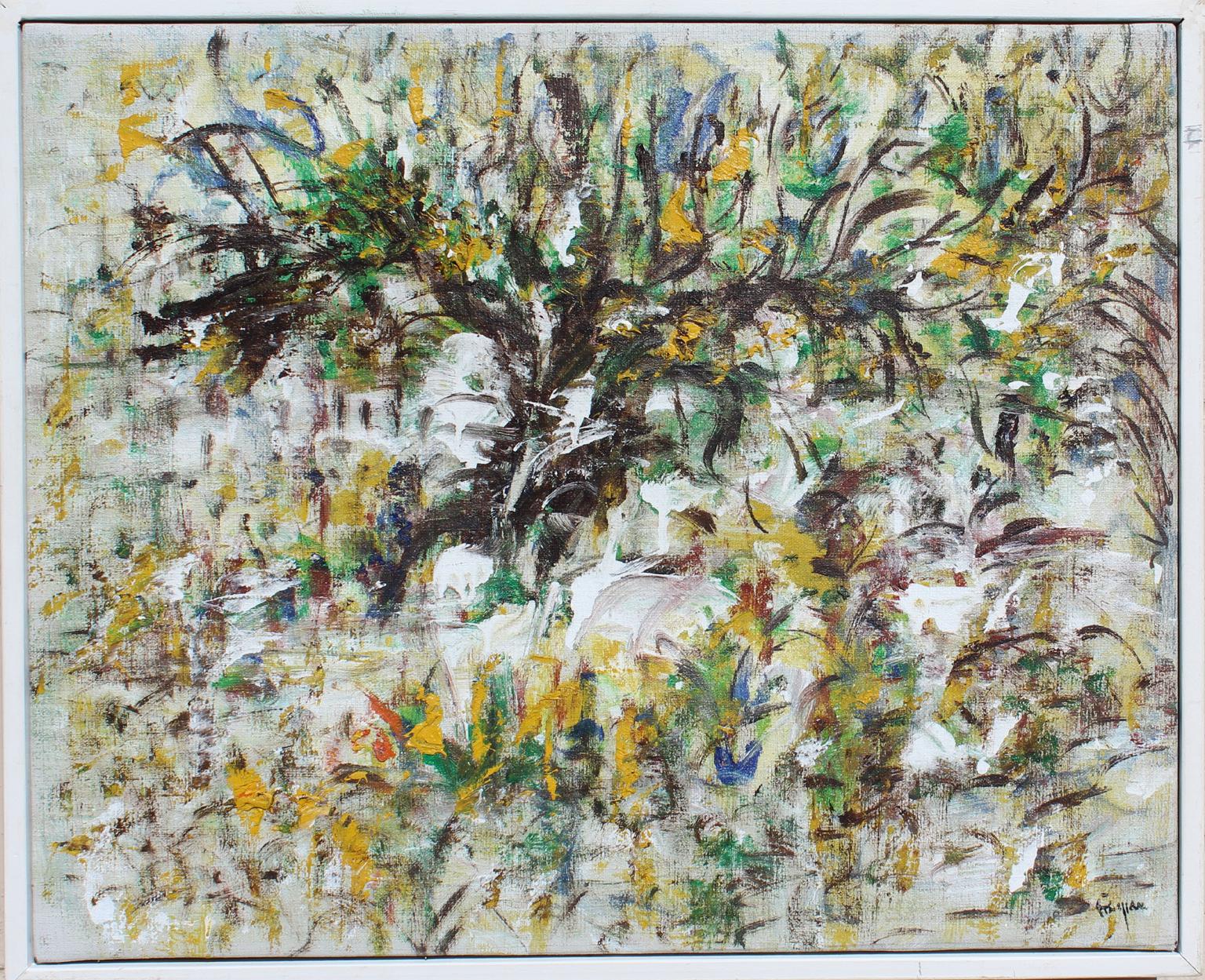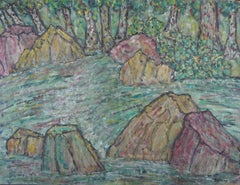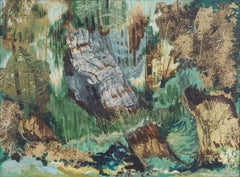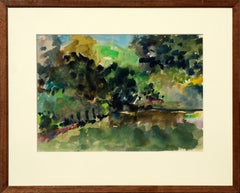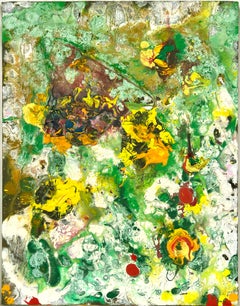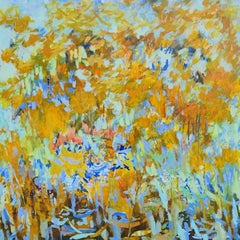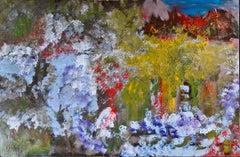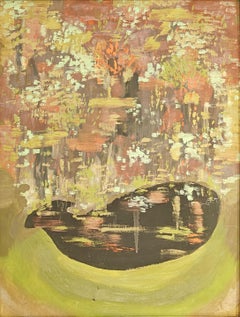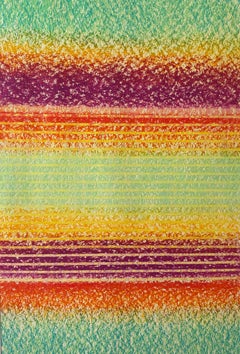Items Similar to Shimmering Pond in the Woods - Surrealist Abstract 1960s
Want more images or videos?
Request additional images or videos from the seller
1 of 11
Rose HerzogShimmering Pond in the Woods - Surrealist Abstract 1960scirca 1960s
circa 1960s
$2,040
$2,55020% Off
£1,551.09
£1,938.8720% Off
€1,786.88
€2,233.6020% Off
CA$2,900.34
CA$3,625.4320% Off
A$3,152.17
A$3,940.2220% Off
CHF 1,665.80
CHF 2,082.2520% Off
MX$38,134.51
MX$47,668.1420% Off
NOK 20,746.37
NOK 25,932.9620% Off
SEK 19,596.23
SEK 24,495.2920% Off
DKK 13,341.09
DKK 16,676.3620% Off
About the Item
Shimmering Pond in the Woods - Surrealist Abstract 1960s
Highly textured abstract composition by Rose Herzog (American, mid-20th Century). A multicolored pond is shown in the middle of the woods, with light shining through the trees. This piece includes the use of tissue paper, fibers, and other materials to create raised, textured areas.
Signed "Rose Herzog" in the lower right corner.
Presented in a wood frame with a beige velvet liner.
No glass.
Canvas size: 24"H x 30"W
Frame size: 28"H x 34"W
Rose Herzog (American, mid-20th Century) was a painter from Los Angeles, California. Herzog was represented by J. Cook Studios.
- Creator:Rose Herzog
- Creation Year:circa 1960s
- Dimensions:Height: 28 in (71.12 cm)Width: 34 in (86.36 cm)Depth: 1.38 in (3.51 cm)
- Medium:
- Movement & Style:
- Period:
- Condition:Painting is in very good condition. Some minor age wear to frame, as expected (included as-is).
- Gallery Location:Soquel, CA
- Reference Number:Seller: 0008_DBH1stDibs: LU54215286152
About the Seller
5.0
Platinum Seller
Premium sellers with a 4.7+ rating and 24-hour response times
Established in 1986
1stDibs seller since 2014
3,012 sales on 1stDibs
Typical response time: <1 hour
- ShippingRetrieving quote...Shipping from: Soquel, CA
- Return Policy
Authenticity Guarantee
In the unlikely event there’s an issue with an item’s authenticity, contact us within 1 year for a full refund. DetailsMoney-Back Guarantee
If your item is not as described, is damaged in transit, or does not arrive, contact us within 7 days for a full refund. Details24-Hour Cancellation
You have a 24-hour grace period in which to reconsider your purchase, with no questions asked.Vetted Professional Sellers
Our world-class sellers must adhere to strict standards for service and quality, maintaining the integrity of our listings.Price-Match Guarantee
If you find that a seller listed the same item for a lower price elsewhere, we’ll match it.Trusted Global Delivery
Our best-in-class carrier network provides specialized shipping options worldwide, including custom delivery.More From This Seller
View AllMid Century Mountain Stream Modernist Landscape
By Honora Berg
Located in Soquel, CA
Mid Century Mountain Stream Modernist Landscape by Honora Berg
This mid century modernist landscape painting by Honora Berg (American, 1897-1985) depicts a vibrant mountain stream, ...
Category
1950s Modern Landscape Paintings
Materials
Gouache, Laid Paper
$1,240 Sale Price
20% Off
Mid Century Modern Pacific Northwest Rain Forest, Earthtone Abstract Landscape
By Hilda Davidson Kaster
Located in Soquel, CA
Wonderful mid century modern mixed media abstracted Northern California landscape by Hilda Davidson Kaster (American, 1912-2008), circa 1950. The artist uses layers of mixed media earth tones and natural textures such as leaves and bark to create the aesthetic of the deep forest of Sebastopol, California. Signed lower left corner, on verso with exhibition and gallery labels. Unframed: Image 18"H x 24"W.
Hilda Davidson Kaster was born in Oakland, California in 1912 to Russian Jewish immigrant parents. She went to New York in the early 1930s to study art. At the Traphagen School of Design, she was a student of Moses Soyer and William Gropper, who were founders of the Ashcan School. Later in the 1930s she worked as a commercial artist and designer for I. Miller Shoes...
Category
1950s Abstract Impressionist Landscape Paintings
Materials
Paper, Acrylic
Mid Century Lake Anza Berkeley Bay Area Abstract Expressionist Landscape W/C
By Howard Margolis
Located in Soquel, CA
Brilliantly colorful mid century expressive abstracted landscape of Lake Anza in Berkeley by Bay Area artist Howard Margolis (American, 1927-2015). Signed “Margolis” in lower right c...
Category
Late 20th Century Abstract Expressionist Landscape Paintings
Materials
Paper, Watercolor
"Garden Series in a Dream" - Abstract Expressionist Acrylic on Canvas
Located in Soquel, CA
"Garden Series in a Dream" - Abstract Expressionist Acrylic on Canvas
Vibrant and expressive composition by California artist Charles "Dave" Francis (American, 1951-2018). A heavy o...
Category
2010s Abstract Expressionist Abstract Paintings
Materials
Canvas, Acrylic, Stretcher Bars
Mid Century Abstract Impressionist Monterey Bay Kelp Forest
By Honora Berg
Located in Soquel, CA
Mid Century Abstract Expressionist Kelp Forest by Honora Berg
This mid century modernist landscape painting by Honora Berg (American, 1897-1985) depicts Monterey Bay's iconic kelp f...
Category
1960s American Modern Landscape Paintings
Materials
Oil, Illustration Board
$877 Sale Price
35% Off
Mid Century Landscape -- Edge of The Forest
By Fritz Blumenthal
Located in Soquel, CA
"Edge of the Forest" monotype with additional brush work by Fritz Blumenthal (Germany, 1913-2002). Unframed with mat. Signed lower right and gallery...
Category
1960s Landscape Paintings
Materials
Paper, Gouache
$920 Sale Price
20% Off
You May Also Like
Woodland Waltz Abstract Landscape Bright Colors New Work 2025
By Eleanor McCarthy
Located in Houston, TX
Woodland Waltz Acrylic on Canvas Bright Colors New Work 2025 36" x 36" Gallery Wrapped
Woodland Waltz is a contemporary abstract painting by Texan artist Eleanor McCarthy. It can also be described as a abstract landscape or floral painting. Eleanor McCarthy uses acrylic paints on canvas to create the soothing colors in her new contemporary paintings that were just painted in 2025. LOOK FOR SHIPPING DISCOUNT QUOTE WHEN YOU CHECK OUT. Every client sees a different image when looking at Florescence
She is inspired by the scenery of Texas, Southwestern Colorado, and Europe. Eleanor has recently begun to pursue non-representational painting and has enjoyed exploring the process of abstraction in creating new works of art. She has added acrylic painting and mixed media application to her artworks. Also shown is Florescence which is 36" x 30".
Eleanor graduated from Tulane University with a BA in Sociology and from Southern Methodist University School of Law with a JD.
Eleanor began to pursue painting after her children went to college. She has studied with Nancy Paris Pruden in Houston for the last 20 years and for two years with Arielle Masson at the Glassell School of Art. Eleanor has furthered her training with painting workshops in Texas, Colorado and Washington State under Mitch Albala, Jeanne Mackenzie, Joshua Been...
Category
2010s Abstract Expressionist Abstract Paintings
Materials
Canvas, Acrylic
"Waterfall in the Forest, " Original Abstract Landscape signed by David Barnett
By David Barnett
Located in Milwaukee, WI
"Waterfall in the Forest" is an original acrylic painting on masonite by David Barnett, signed on the verso. The work breaks down the image of the title to its most basic colors and ...
Category
1960s Abstract Expressionist Abstract Paintings
Materials
Masonite, Acrylic
"Pond in Back of Her House" Virginia Berresford, Modernist, Abstract Landscape
By Virginia Berresford
Located in New York, NY
Virginia Berresford
Pond in Back of Her House
Signed and titled on the reverse
Oil on board
23 1/2 x 17 1/2 inches
Virginia Berresford was an underrated American modernist who had ...
Category
1950s American Modern Abstract Paintings
Materials
Oil, Board
"Lake in the forest"
Located in Edinburgh, GB
The drawing was created in nature. The inspiration for the creation was a spring landscape of a forest and a lake. The search for a combination of linear structure and colors took pl...
Category
21st Century and Contemporary Abstract Abstract Paintings
Materials
Pastel, Oil
Landscape, Woodstock, 1968
By Arthur Pinajian
Located in La Canada Flintridge, CA
ARTHUR PINAJIAN (1914-1999).
Untitled, Archived No. 115, year 1962.
Image size: 19 3/4"x16", 50cmx40.50cm
Provenance: The Pinajian Estate Collection .
THE PINAJIAN DISCOVERY:
At ...
Category
1990s Abstract Expressionist Landscape Paintings
Materials
Oil
Distorted pond (Iridescent garden), Painting, Acrylic on Canvas
By Nestor Toro
Located in Yardley, PA
This artwork was created layering and blending thick layers of many colors, completed with iridescent effects and bright yellow! Ready to hang, signed. I include a certificate ...
Category
21st Century and Contemporary Abstract Expressionist Paintings
Materials
Acrylic
More Ways To Browse
Rose Thal
H Herzog
Poseidon Painting
Prometheus Painting
Ray Jackson
Ray Summer
Rosa Esman
Strawberry Fields
Teal Gold Abstract
Tom Birmingham
Trinidad Art
Water Sky Acrylic
Will Green At Ron Green
Wilma Fiori
1 Line Abstract Art
Abstract Glacier Paintings
American Abstract Expressionism Painting
Aurora Borealis Painting
